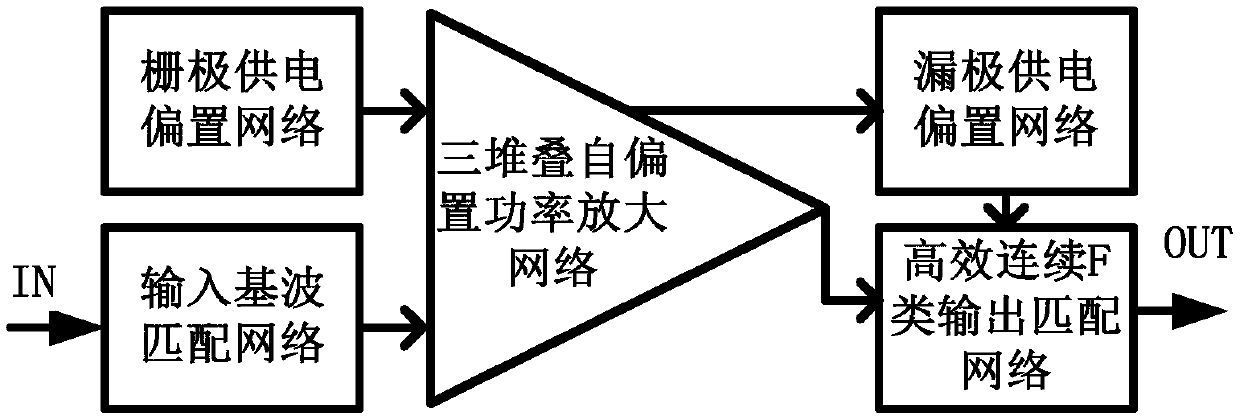High-efficient continuous F-class power amplifier based on transistor stacking technology
A technology for power amplifiers and power amplification, applied in power amplifiers, amplifiers with semiconductor devices/discharge tubes, amplifiers, etc., can solve the problems of low power output capability and power gain capability, mutual constraints of ultra-wideband high-efficiency indicators, and broadband output Capability and efficiency are low, to achieve good input and output matching, simplify the peripheral grid power supply structure, improve power capacity and power gain
- Summary
- Abstract
- Description
- Claims
- Application Information
AI Technical Summary
Problems solved by technology
Method used
Image
Examples
Embodiment Construction
[0019] Exemplary embodiments of the present invention will now be described in detail with reference to the accompanying drawings. It should be understood that the implementations shown and described in the drawings are only exemplary, intended to explain the principle and spirit of the present invention, rather than limit the scope of the present invention.
[0020] An embodiment of the present invention provides a high-efficiency continuous class F power amplifier based on transistor stacking technology, such as figure 1 As shown, including input fundamental wave matching network, three-stack self-biased power amplifier network, high-efficiency continuous class F output matching network, gate supply bias network and drain supply bias network; the input terminal of the input fundamental wave matching network is The input end of the entire high-efficiency continuous class F power amplifier is connected to the input end of the three-stacked self-biased power amplification netwo...
PUM
 Login to View More
Login to View More Abstract
Description
Claims
Application Information
 Login to View More
Login to View More - R&D
- Intellectual Property
- Life Sciences
- Materials
- Tech Scout
- Unparalleled Data Quality
- Higher Quality Content
- 60% Fewer Hallucinations
Browse by: Latest US Patents, China's latest patents, Technical Efficacy Thesaurus, Application Domain, Technology Topic, Popular Technical Reports.
© 2025 PatSnap. All rights reserved.Legal|Privacy policy|Modern Slavery Act Transparency Statement|Sitemap|About US| Contact US: help@patsnap.com


